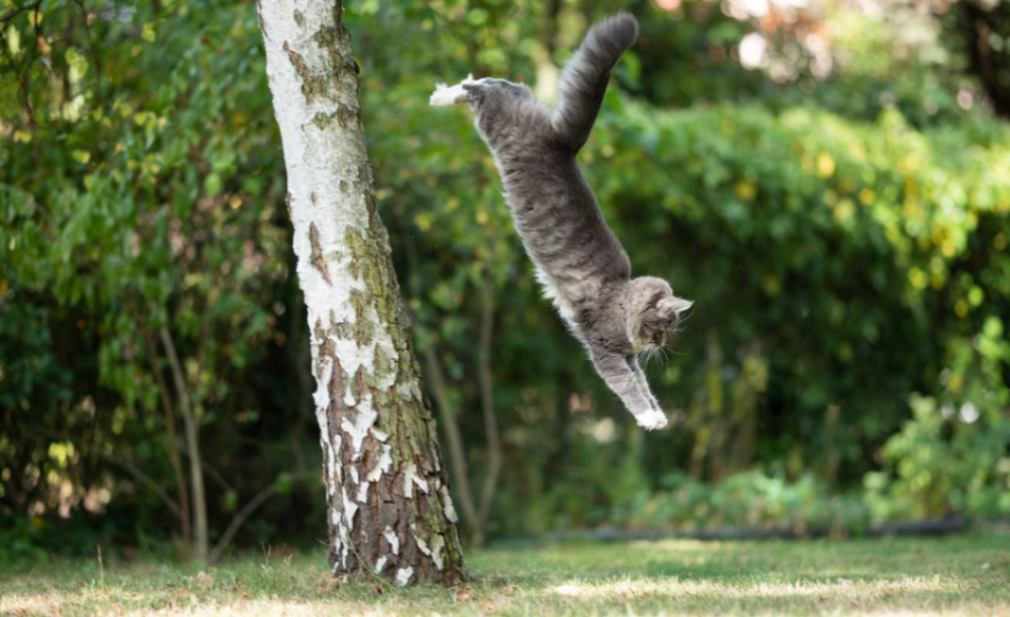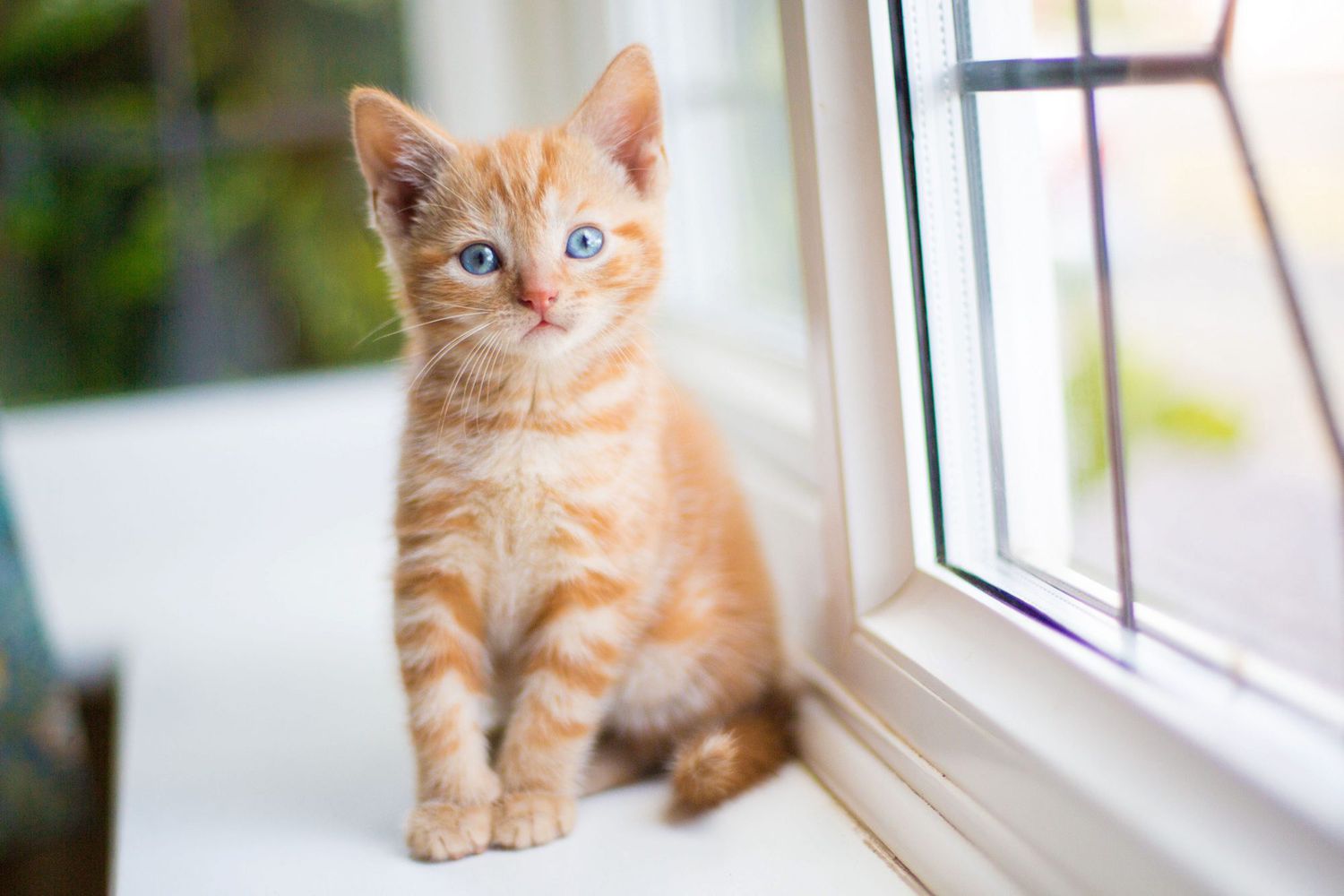Cats often survive falling from tall buildings which would be deadly for other animals. People even joke or post memes about cats having nine lives, suggesting that cats can survive almost anything. How do cats survive falling from such great heights?
How Objects Fall Down
When something falls, it speeds up (accelerates), due to gravity. The longer the fall, the faster it goes. However, this increase in speed doesn’t continue forever. As the object speeds up, the air resistance will also keep increasing. At some point, the force of air resistance will become equal to the force of gravity. After this, the acceleration stops, and the falling object reaches a constant speed known as terminal velocity. Terminal velocity is the maximum speed an object will reach as it falls. It is determined by the balance between the force of gravity pulling the object down and the air resistance pushing against it.

How Cats Fall Down
What’s unique about cats is that they reach their terminal velocity quicker than larger animals. And their terminal velocity is lower. For humans, terminal velocity is about 120 miles per hour (193 kilometers per hour), but for cats, it’s around 60 miles per hour (97 kilometers per hour). This lower terminal velocity means cats hit the ground with less force than we would.
Why Cats’ Terminal Velocity is Low
First, cats have a relatively low body mass compared to their surface area. This means they have more air resistance relative to their weight, slowing them down more quickly as they fall. Think of a feather versus a rock: the feather falls more slowly because it has more air resistance relative to its weight.
Second, cats have an incredible righting reflex. This reflex kicks in immediately after they begin to fall. First, they turn toward the ground so they land on their feet. Then, by spreading out their bodies and extending their legs, they increase air resistance, further slowing their fall. This is similar to how a parachute works: when a skydiver opens their parachute, it spreads out and catches the air, significantly slowing their descent.

Landing
Just before landing, they bring their legs down to land on their feet. Their flexible bodies and lack of a collarbone help them absorb the impact. Their legs act like shock absorbers, and their bodies can spread out the force of landing, minimizing injuries.

There are many real-life examples of cats surviving high falls. In New York City, a cat fell from a 32-story building and survived with only minor injuries. Another cat fell 19 stories and was back on its feet after a few days of rest. These stories highlight the amazing resilience of cats when it comes to falling from heights.
Cats aren’t the only animals with this kind of ability. Flying squirrels, for example, can glide through the air using the flaps of skin between their legs, similar to how a parachute works.
However, it’s important to remember that while cats have remarkable survival abilities, they are not invincible. Falls can still result in serious injuries or even death, especially if the cat lands on a hard surface or doesn’t have enough time to turn its body in the right way.
Reference Links:
https://www.bbc.com/news/magazine-17492802
https://en.wikipedia.org/wiki/High-rise_syndrome
